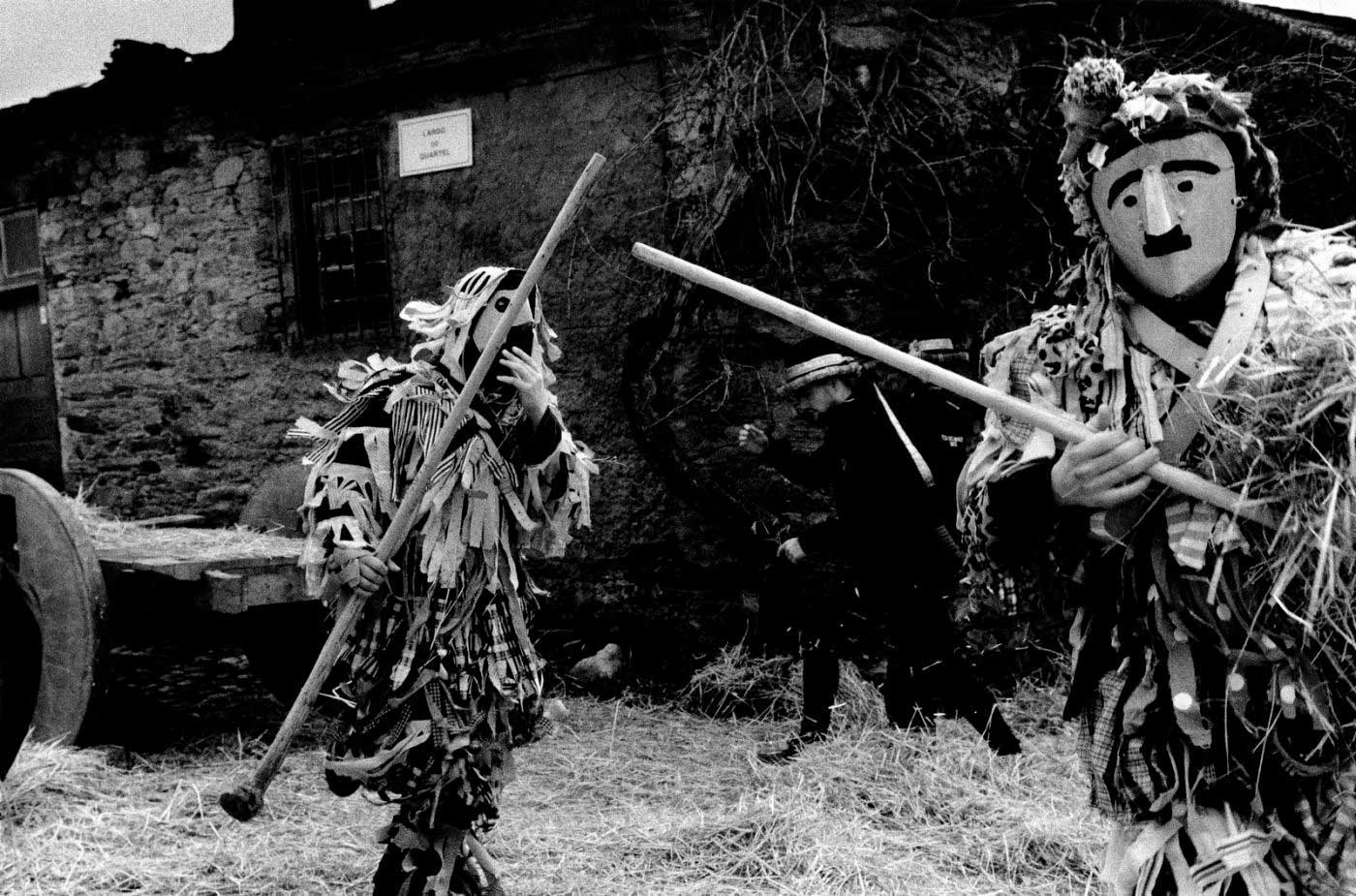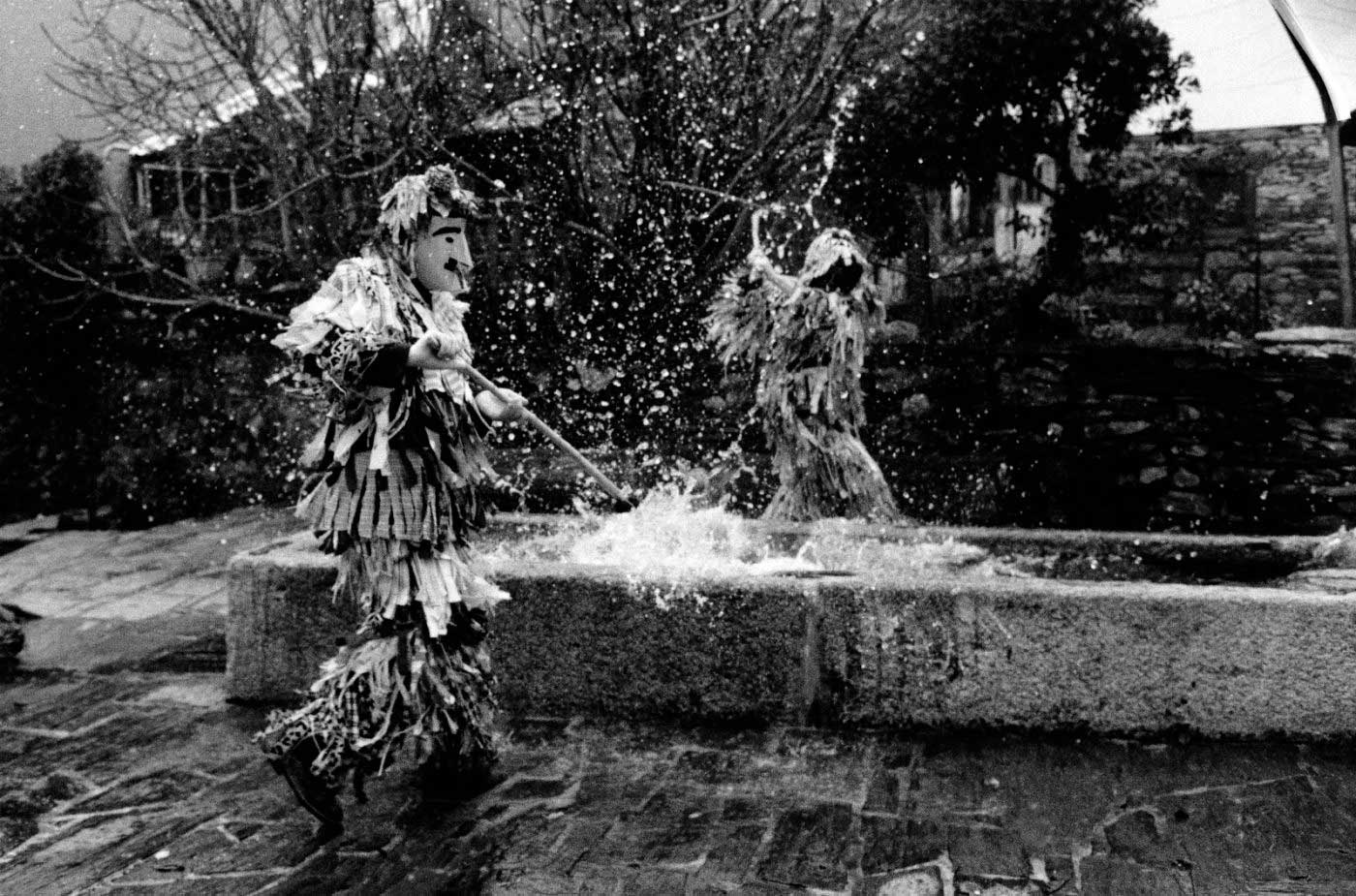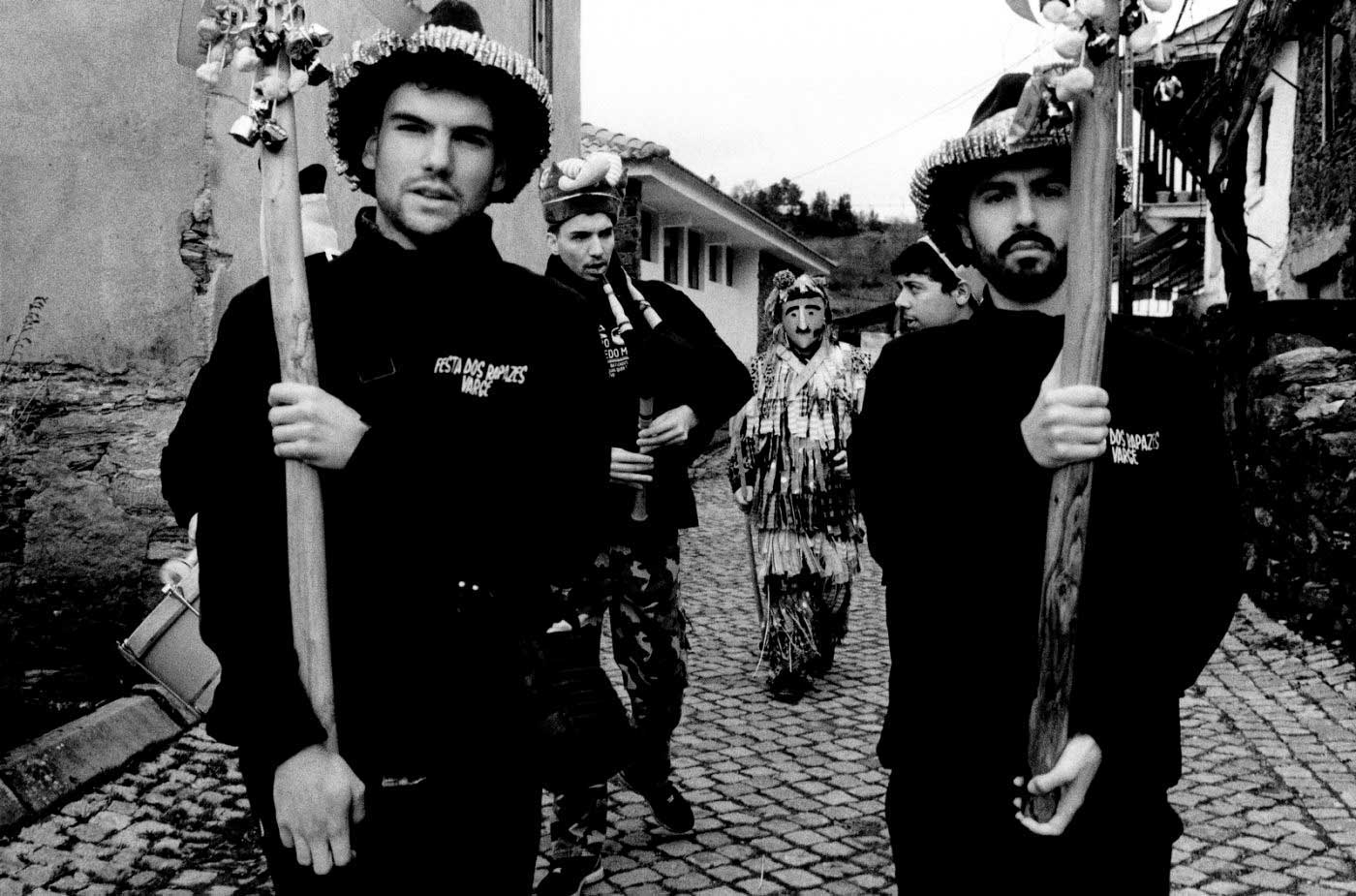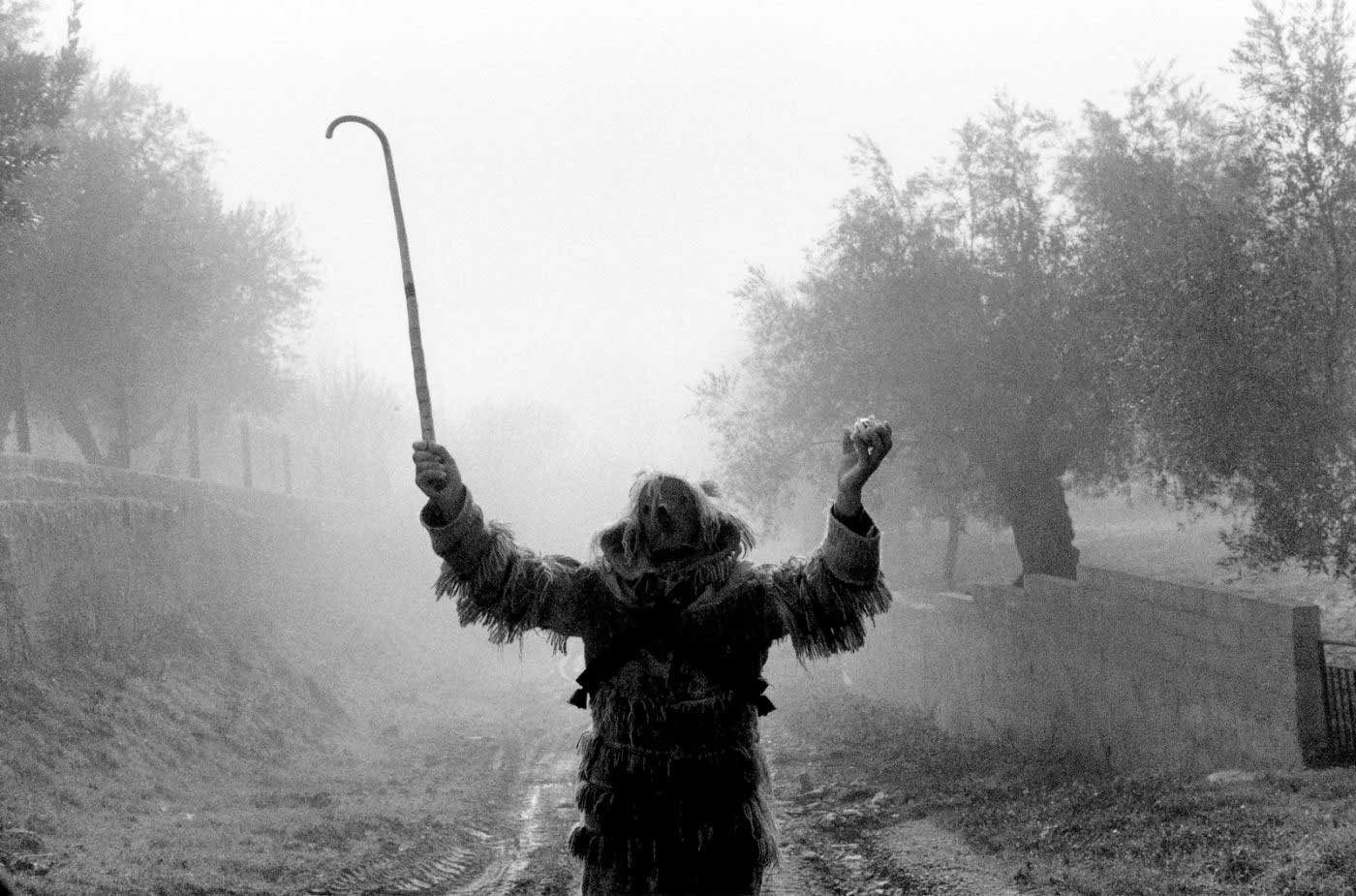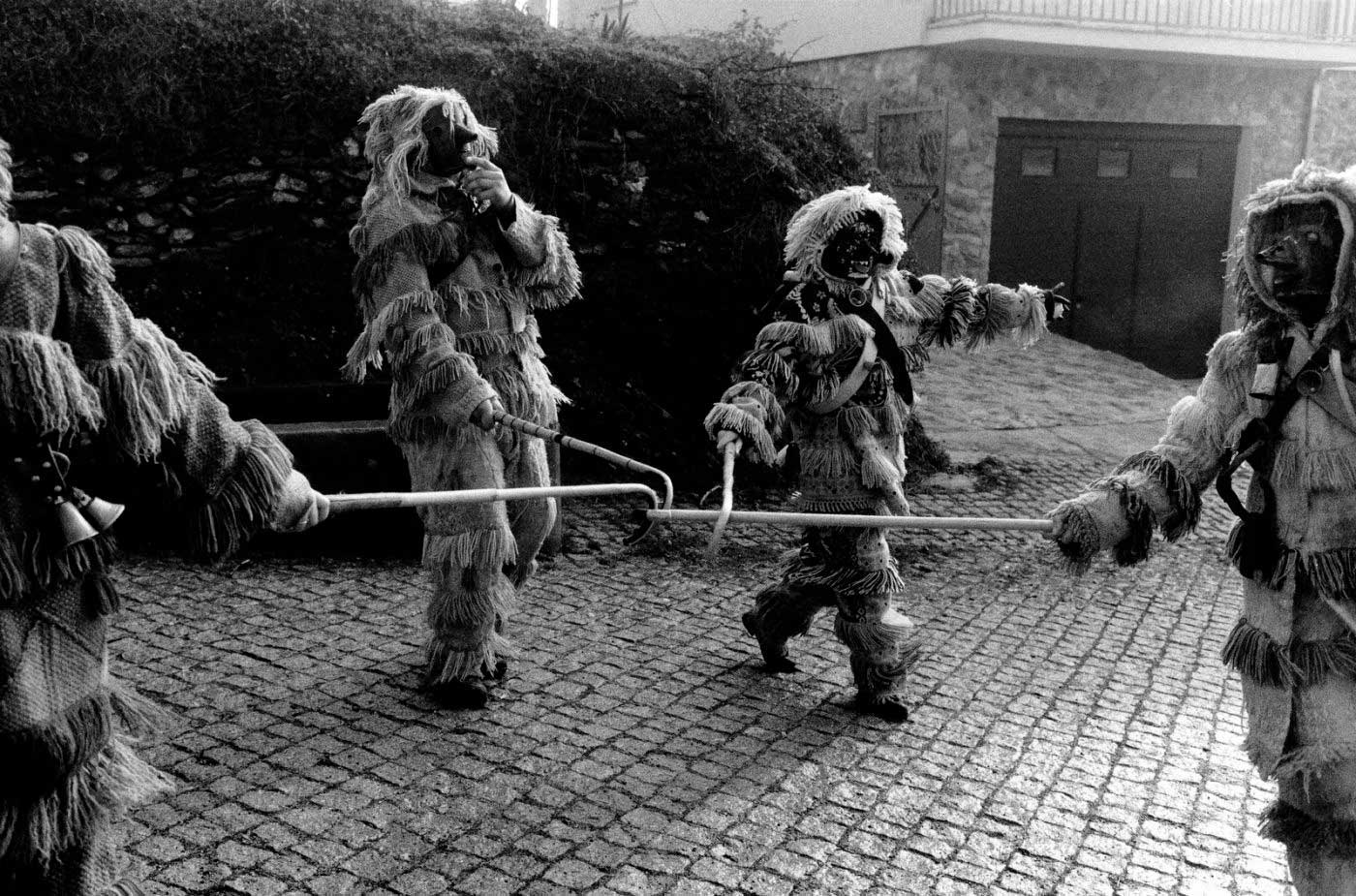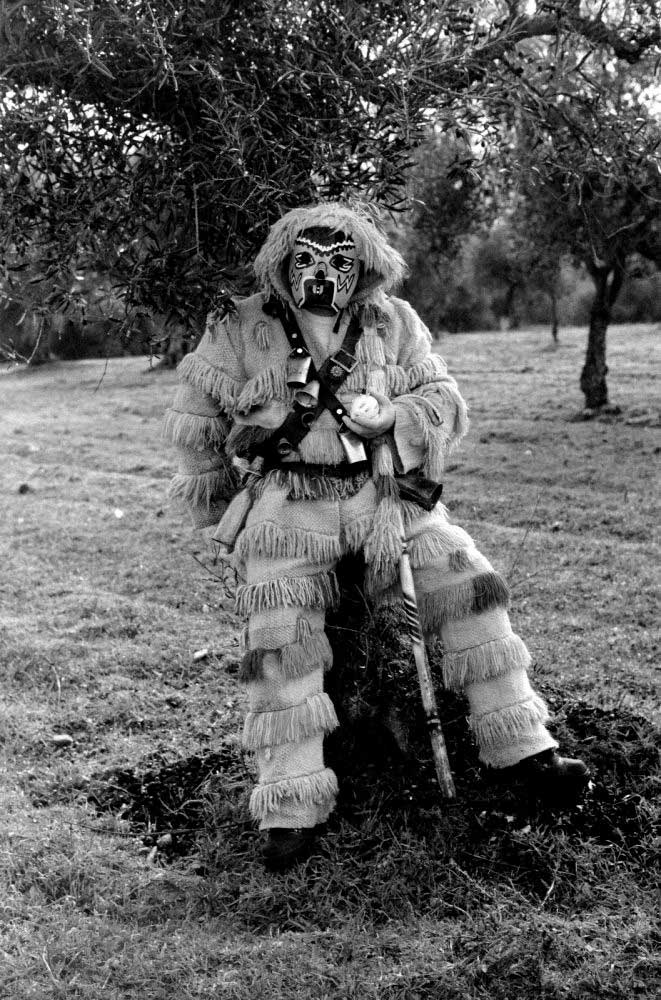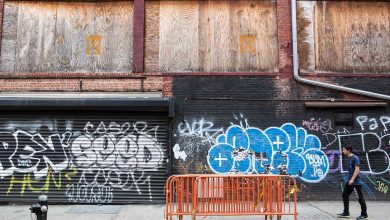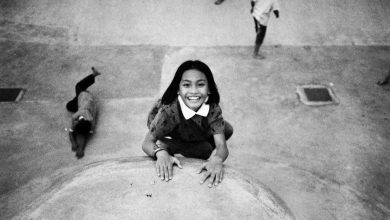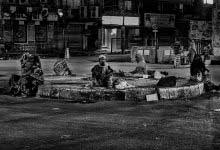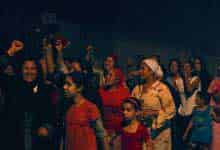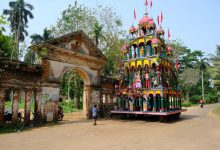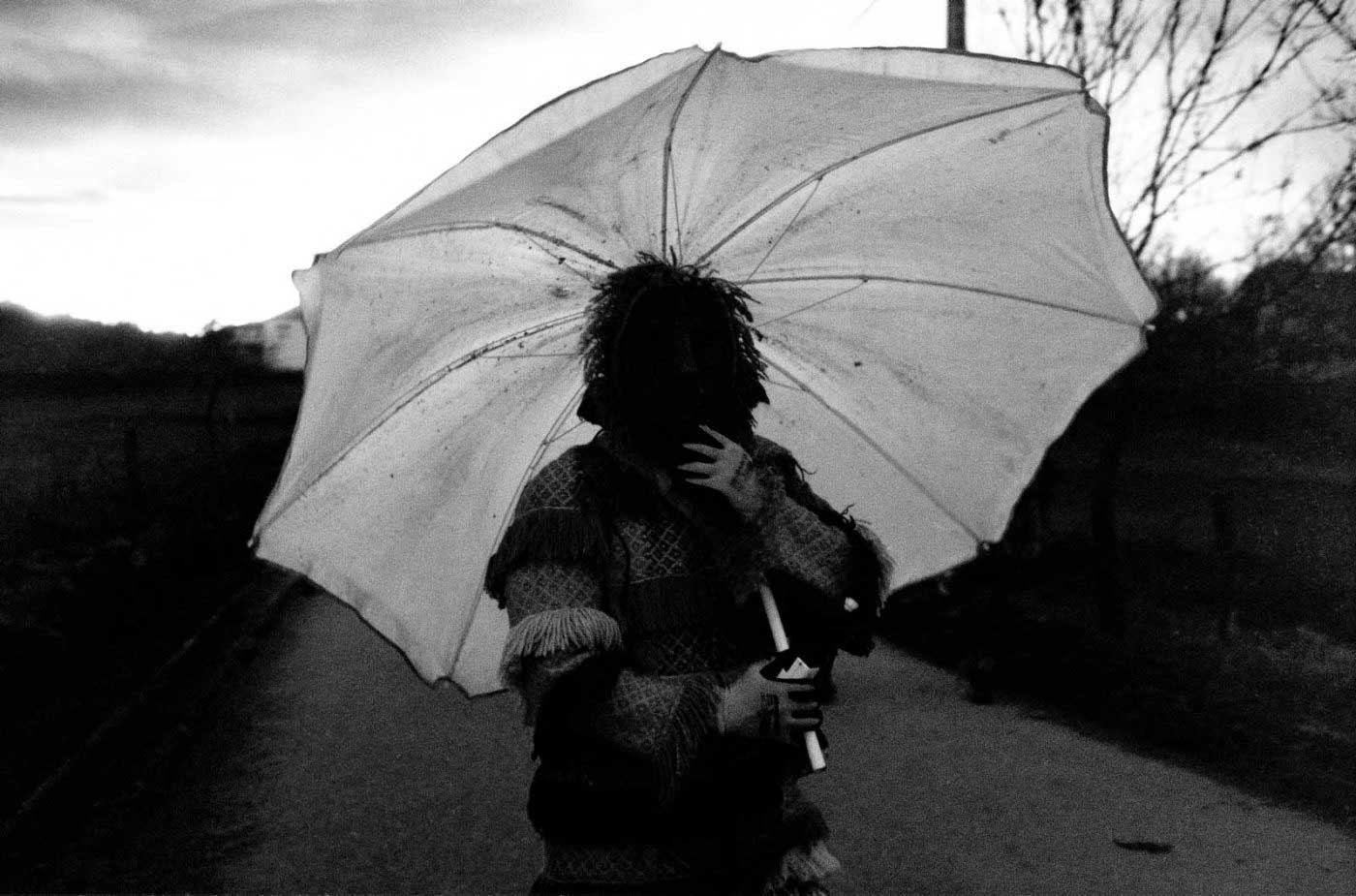
As a consequence of centuries of history, during which multiple contacts were made with different realities, Portugal is a country very rich in cultural events.
This portfolio documents rituals with masks that take place in the Trás-os-Montes region.
These pagan feasts have long been practiced in agrarian societies on the winter solstice, dating back to Celtic and Roman culture. Subsequently, with the advent of Christianity, the Catholic Church incorporated the festivities into the Christmas cycle, which were renamed Festivities of the Singles or Saint Stephen Festivities. Saint Stephen was a young martyr of Christianity.
The masks
The masks are built by local artisans, who use the most diverse materials such as wood, cork or brass in their manufacture. They represent animals of the local fauna, diabolical figures or human figures.
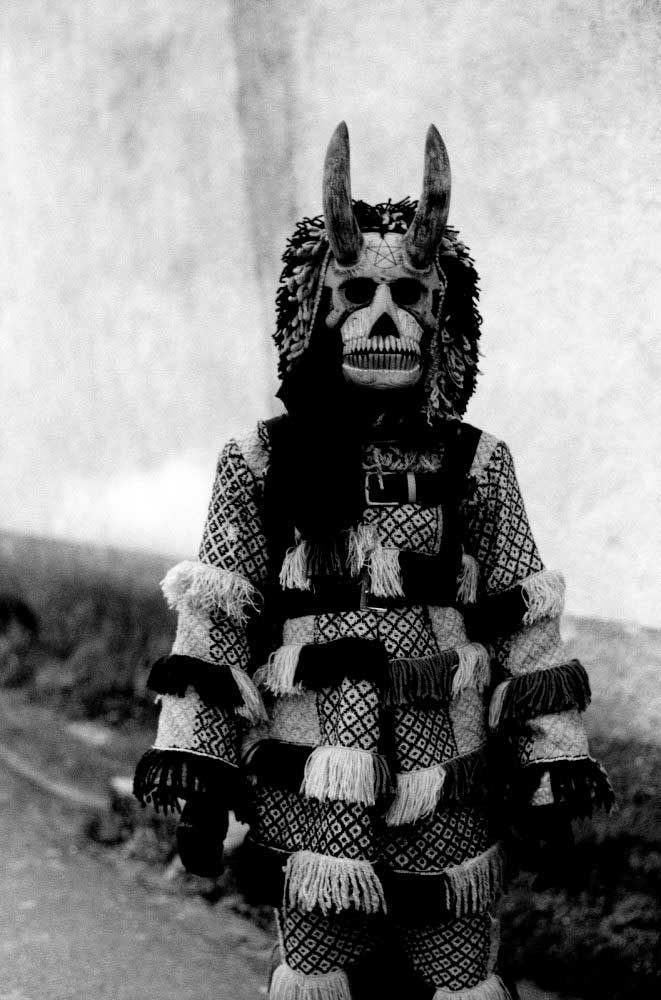
Participants in the rituals are called “máscaros” or “caretos”, depending on the village where the ritual takes place. They are accompanied by other participants such as pipers and drummers, as well as others who assume the role of kings or bishops.
On December 25 and 26 of each year, “máscaros” and “caretos”, run through the villages, enlivening the party with tricks and mischief, spreading chaos between the population and the visitors. The inhabitants of the villages receive them in their houses, with a table well stuffed with food and drink.
In the past, only single boys could participate in the ritual, but nowadays participation has been extended, in some villages, to women and men, married or single, and also to children. This is an evolution that guarantees the continuity of the parties, in addition to promoting equal opportunities.



